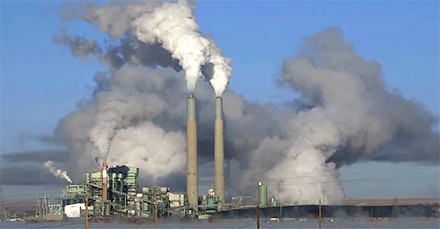
Cholla power station
Arizona’s largest electricity utility plans to test whether a coal-fired plant can instead be fueled by wood chips from pine trees, a conversion that could keep part of the plant open and save jobs of some its workers. Forest thinning that would produce the biomass for Arizona Public Service Company’s Cholla Power Plant near Holbrook also would reduce the threat of destructive wildfires. Sources: Press Herald, AZ Central
The Arizona Republic reported that: “A conversion at Cholla would ultimately assist in forest thinning, thereby reducing wildfire potential, ensuring forest health, and protecting our watersheds,” APS Vice President of Regulation Barbara Lockwood said in a March 20 letter to regulators.
One of the plant’s four units is already closed, and Arizona Public Service Co otherwise plans to shut down both of its remaining units in 2025. That’s when utility PacifiCorp also plans to close the one unit it owns.
About 200 people work at the Cholla Power Plant. It is unclear how many jobs would remain should the plant convert to coal, but it’s unlikely the full staff would be needed because only one of three generators would be converted.
Converting the plant to natural gas was considered, that is not being pursued, APS officials said.
Regulators at the Arizona Corporation Commission in December approved a policy to embrace forest biomass as a renewable-energy technology. Arizona has one small power plant new Snowflake fuelled by forest biomass with a capacity of 24 megawatts. That’s enough power to supply about 6000 homes when the plant is running.
The ponderosa pine forests in Arizona are severely overgrown from more than a century of fire suppression and livestock grazing, which eliminates the frequent, small fires that kept the tree growth in check.
Now many parts of the state’s forests are choked with thousands of small trees per acre, and combined with drought, they pose severe wildfire risks. When fires spark, they tend to ignite megafires that burn through the crowns of trees, rather than just burning up the smaller trees and grass.
The US Forest Service can pay to cut and burn the excess trees, but such thinning projects are expensive. Finding a commercial use for the small trees has been a challenge, which makes burning them for electricity attractive.
The US Environmental Protection Agency considers electricity from forest biomass to be carbon neutral and to not contribute to climate change. But there is some debate on the subject.
Arizona Corporation Commissioner Andy Tobin, who has been pressing for updated renewable-energy rules that incorporate more forest biomass, has frequently argued that burning trees to generate power might create carbon emissions.
But Mr Tobin notes that the alternative has been to simply cut and burn such overgrowth in piles during cool seasons when the threat of sparking a wildfire is minimal, resulting in the same emissions being released but without generating electricity.





